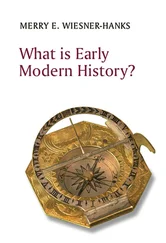R. Nisbet Bain - The Cambridge Modern History
Здесь есть возможность читать онлайн «R. Nisbet Bain - The Cambridge Modern History» — ознакомительный отрывок электронной книги совершенно бесплатно, а после прочтения отрывка купить полную версию. В некоторых случаях можно слушать аудио, скачать через торрент в формате fb2 и присутствует краткое содержание. Жанр: unrecognised, на английском языке. Описание произведения, (предисловие) а так же отзывы посетителей доступны на портале библиотеки ЛибКат.
- Название:The Cambridge Modern History
- Автор:
- Жанр:
- Год:неизвестен
- ISBN:нет данных
- Рейтинг книги:4 / 5. Голосов: 1
-
Избранное:Добавить в избранное
- Отзывы:
-
Ваша оценка:
- 80
- 1
- 2
- 3
- 4
- 5
The Cambridge Modern History: краткое содержание, описание и аннотация
Предлагаем к чтению аннотацию, описание, краткое содержание или предисловие (зависит от того, что написал сам автор книги «The Cambridge Modern History»). Если вы не нашли необходимую информацию о книге — напишите в комментариях, мы постараемся отыскать её.
The first series was planned by Lord Acton and edited by him with Stanley Leathes, Adolphus Ward and George Prothero.
The Cambridge Modern History Collection features all five original volumes:
Volume I: The Renaissance
Volume II: The Reformation, the End of the Middle Ages
Volume III The Wars of Religion
Volume IV: The 30 Years' War
Volume V: The Age of Louis XIV
The Cambridge Modern History — читать онлайн ознакомительный отрывок
Ниже представлен текст книги, разбитый по страницам. Система сохранения места последней прочитанной страницы, позволяет с удобством читать онлайн бесплатно книгу «The Cambridge Modern History», без необходимости каждый раз заново искать на чём Вы остановились. Поставьте закладку, и сможете в любой момент перейти на страницу, на которой закончили чтение.
Интервал:
Закладка:
The first impulse of the proud Republic was to bow before the storm. France was allowed to occupy Bergamo and Brescia, Crema and Cremona, almost unopposed. The visdomino, whom the Signoria had some years before set up at Ferrara as a mark of suzerainty, was driven out. The restitution of the towns of Romagna and other concessions were offered to the Pope, and shortly afterwards the Romagna was actually evacuated. Verona, Vicenza, and Padua were allowed to give themselves up to emissaries, real or’ pretended, of the Emperor. Treviso was still held, but the recent conquests to the east of Venice were given up. The towns in Apulia were abandoned. Meanwhile every effort was made to strengthen the narrower line of defence. Fresh troops were raised, and money and stores collected; while on the other hand attempts were made to open negotiations, with the allies severally, and especially with the Pope.
Maximilian had appeared at Trent in June; but as his forces were slow in collecting, the Venetians felt strong enough in July to re-establish themselves in Padua, which was made as strong as possible. Thus, when at length in August he was ready to move, the first thing necessary was the recapture of this fortress-city. Supported by 500 French lances under la Palice, and an army that seemed to contemporaries nothing less than prodigious, he sat down to besiege the town in the middle of August. The hostility of the peasantry, whose hearty loyalty furnishes the best testimonial to Venetian good government, caused him much difficulty, and his heavy guns were not in position till the middle of September. Dissensions arose among the allies. La Palice was on the worst of terms with Maximilian’s chief military adviser, Constantin Areniti. A famous legend represents Bayard himself and the French men-at-arms as unwilling to go to the assault on foot unless accompanied by the German nobles and gentlemen, who declined to derogate so far. Finally the siege was given up on October 2. Soon afterwards the Emperor took his departure to the Tyrol; the French retired into the Milanese, and the Pope withdrew his men. Vicenza speedily returned to Venetian rule, and Verona alone of the more important places remained in imperial hands.
In February, 1510, the Venetians at length came to terms with the Pope. His conditions were hard, but they were accepted. Venice recognised in full the immunities of the clergy and the papal right to provide to all Venetian benefices, renounced all unauthorised treaties concluded with towns in the Papal States, abandoned all intention of appealing to a council against the papal bans, and conceded free navigation of the Adriatic to all papal subjects, among whom Ferrara was expressly included. In return, the Pope admitted the humble request of the Republic for pardon, and promised his good offices in future. The Venetians were allowed to recruit in the Papal States, where they engaged several famous condottierl, among others Giampaolo Baglione, and Renzo da Ceri. Thus the first aim of Julius was secured. He had humiliated the Queen of the Adriatic, and recovered all rights usurped by Venice from the Holy See. He was now at liberty to turn his attention to his second object, the expulsion from Italy of the “Barbarians”-in the first place of the French. For this purpose he hoped to win the aid of the Emperor and of Henry VIII. But abundant patience was needed before this could be brought about. The first effect of the Pope’s change of policy was rather to increase the bitterness of Maximilian against the Venetians, so that he tried to induce the Turk to attack them. With the King of Aragon Julius was not at first much more successful. Ferdinand accepted the investiture of Naples, but showed no inclination to an open breach with the league. There remained the Swiss.
The Swiss were poor and ignorant, their general Diet ill-instructed and impotent, their leading men needy and venal, their common men ready to follow any liberal recruiting officer, and even the cantonal governments lacked coercive force. Thus the fine military qualities so often displayed by them in these wars had hitherto served only to win the mercenary’s pittance. French victories would have been impossible without Swiss aid; French disasters had fallen mainly on the Swiss. But latterly they had risen to a higher sense of their own value; their arrogant behaviour and exorbitant demands had begun to fatigue the French paymaster. Relations, which had never been easy, had now become decidedly unfriendly; for the French King had refused the Swiss terms, and discharged his unruly levies, intending in future to draw his infantry from Germany, the Orisons, and the Valais. Moreover the ten years’ treaty of 1499 had run to a close, and Louis showed no great eagerness for its renewal.
Already in 1506-7 the Emperor had tried to shake the Franco-Swiss alliance, and lavish expenditure had been needed to neutralise his influence. For the expedition against Imperial Genoa it had been necessary first to hoodwink, afterwards to ignore, the Swiss authorities. The Swiss who fought at Agnadello were illicit volunteers. It was the task of Julius to turn Swiss dissatisfaction to his own ends, and for this purpose he had an admirable instrument in Matthaus Schinner, Bishop of Sion. A man of energy and ambition, plausible and energetic, the enemy of France, Schinner was early in 1510 set to win the Cantons and the Diet for the Pope, and a defensive alliance was concluded. In July the Diet was asked to give effect to this agreement by assisting the Pope in the invasion of Ferrara, which persisted in hostility against Venice. To comply was an act of open hostility to France, the ally of Ferrara; moreover, Ferrara could only be reached through Milanese territory. However, the influence of Schinner prevailed, and 10,000 men set out. The Diet still hesitated; French gold was at work; Chaumont d’Amboise was prepared to resist any attack on the Milanese; the Swiss, without artillery and scant of victual, did not venture to advance beyond the land which lies between Como and the Lago Maggiore. In all their movements they were closely followed by the French, and finally they were forced to retire without having effected anything (September). During the winter negotiations proceeded between the Pope and the Swiss, the latter pressing in vain for the pay of the troops supplied. Meanwhile the offers of the King of France were met by the determined opposition of the Forest Cantons, whose antagonism to the French was growing, increased by measures directed against their trade with Milan. Maximilian, on the other hand, succeeded in concluding (February, 1511) a defensive treaty with a majority of the Cantons in favour of his duchy of Austria and his county of Burgundy. Thus the greatest powers of Europe were treating as equals with the league of peasants and burghers.
Meanwhile in the war France had held her own. An attack by sea and land on Genoa failed ignominiously. The efforts directed by Julius against Ferrara led only to the capture of Modena. Nor did Louis despise ecclesiastical weapons. A synod of French clergy at Tours (September, 1510) declared the King justified in making war on the Pope in defence of his States and his allies, and called for the summons of a General Council. Embarking on this plan with the support of the Emperor, the King was able to attract five cardinals to his side, who not long after issued an invitation to a General Council to be held at Pisa in September, 1511. Pressing on at the same time in arms, Chaumont d’Amboise threatened Bologna, where the Pope lay ill. The danger was extreme; but the unconquerable vigour of the Pope and opportune assistance from Venice averted the worst. Having repulsed the French, the Pope urged forward his schemes against Ferrara; taking the field himself in the snows of winter, he occupied Concordia, and besieged and took Mirandola (January, 1511). There his successes stopped. Trivulzio, who assumed the command after the death of Chaumont (February, 1511), recovered Concordia and Mirandola, and in May Bologna was abandoned to him. The Pope retired to Ravenna. Misfortune brought with it dissension. The Pope’s nephew and commander-in-chief, the Duke of Urbino, charged by the Pope’s favourite, Cardinal Alidosi, legate of Bologna, with the blame for the loss of that city, and unable to get support from his uncle, fell upon his accuser and slew him. The Pope’s fortunes were at their lowest ebb, but his will was unshaken. Returning to Rome, he met the hostile summons to a General Council by summoning a Council of his own to meet at the Lateran in April, 1512. For material help he turned to Spain; but in the crisis of discussion fell sick almost to death. Baffling his enemies by a complete recovery, he fortified himself against them by concluding with Venice and Spain in October, 1511, the Holy League for the recovery of all papal territory. It was soon afterwards joined by Henry VIII.
Читать дальшеИнтервал:
Закладка:
Похожие книги на «The Cambridge Modern History»
Представляем Вашему вниманию похожие книги на «The Cambridge Modern History» списком для выбора. Мы отобрали схожую по названию и смыслу литературу в надежде предоставить читателям больше вариантов отыскать новые, интересные, ещё непрочитанные произведения.
Обсуждение, отзывы о книге «The Cambridge Modern History» и просто собственные мнения читателей. Оставьте ваши комментарии, напишите, что Вы думаете о произведении, его смысле или главных героях. Укажите что конкретно понравилось, а что нет, и почему Вы так считаете.












